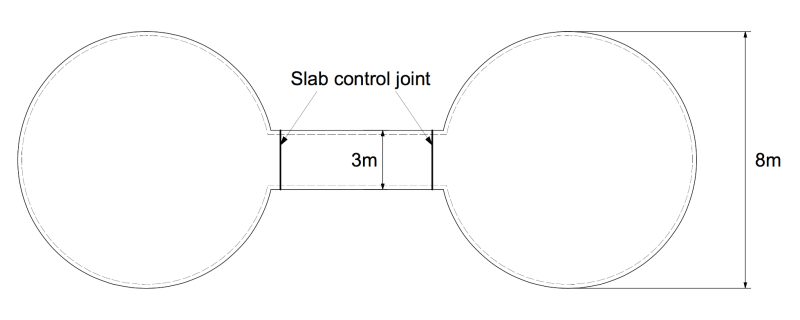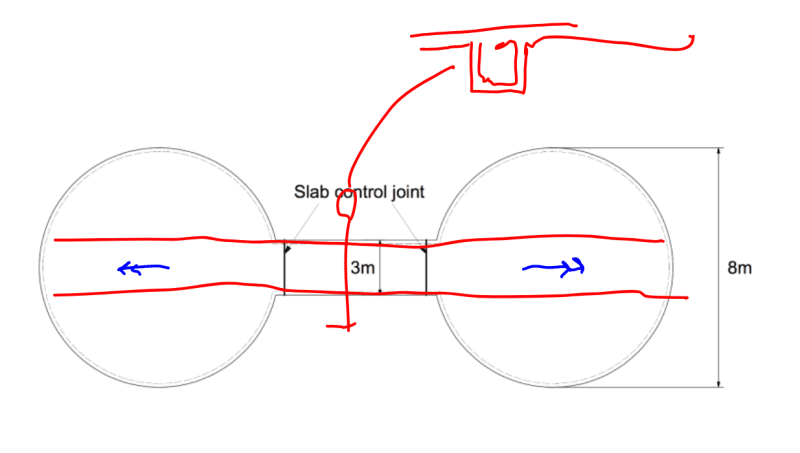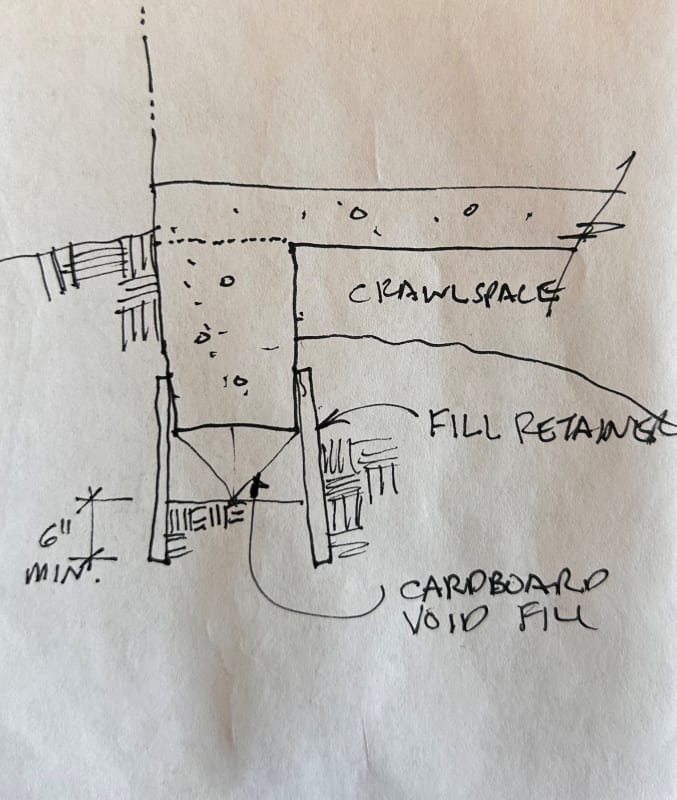Hey all. We have a building that is being built on an expansive clay site. It is built using shotcrete concrete domes connected by a domed hallway. The slab is polished concrete so is highly susceptible to shrinkage cracking at the hallway. As a result, I am wanting to place control joints in the hallway slab at the locations shown in the image (dashed lines are walls of the concrete domes above).
I realise that dowels through slab control joints are best using a non-bonded dowel (such as greased or sleeved etc). However, since this is a reactive site and the concrete dome shell is above, I are trying to avoid any hinge action at the joint and would want full moment transfer. Therefore, I was thinking of using dowels that have full development on each side (eg. non-bonded with 500mm lap each side to slab reo). Would this at all reduce the plastic shrinkage cracking in the slab, or do you think that non-bonded dowels are the only way to go?
Thanks

I realise that dowels through slab control joints are best using a non-bonded dowel (such as greased or sleeved etc). However, since this is a reactive site and the concrete dome shell is above, I are trying to avoid any hinge action at the joint and would want full moment transfer. Therefore, I was thinking of using dowels that have full development on each side (eg. non-bonded with 500mm lap each side to slab reo). Would this at all reduce the plastic shrinkage cracking in the slab, or do you think that non-bonded dowels are the only way to go?
Thanks


![[neutral] [neutral] [neutral]](/data/assets/smilies/neutral.gif)

